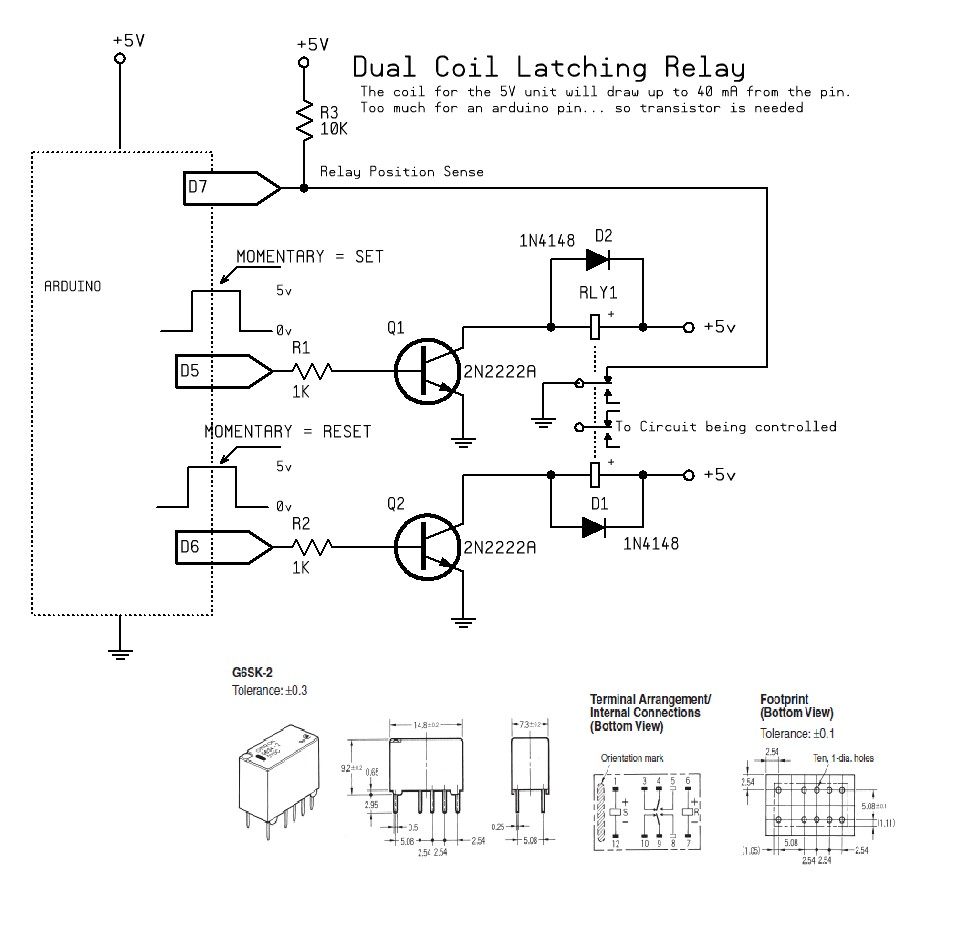So, I’m hanging out in IRC and a guy wants to be able to use a latching relay (and hasn’t bought one yet) and wants to know how it can help his battery operated Arduino device switch contacts but not lose power to an engaged relay coil. “Simple”, I say, and then realize that I had intended on researching small current latching relays for my own project.
So here’s the circuit.

…and here’s the explanation.
The relay that was chosen is from the very likable OMRON G6 series of tiny relays. It is a dual coil type that latches to a position after a brief “impulse”. In this case… after the Arduino briefly supplies a connection to GND for the coil using an NPN transistor.
The specifics of the part are: G6SK-2-DC5 (You can check out the the full specs HERE )
This device is a 5V unit with a pair of 125 Ohm relay coils. (works out to be about 40 mA, too much for a MCU pin… so NPN drivers are required, not optional)
So, why do we have a DPDT unit? Because we need a spare pair of contacts to let the Arduino know which state the relay is in after power up… since it can be in either position when power off. The Arduino can know the relay’s current state by checking to see if (pin 7 in this case) a high is seen on the sense pin. The sense pin is set to draw 0.5 mA when in the SET state and 0 mA in the RESET state.
For the curious: Mouser.com stocks this part

